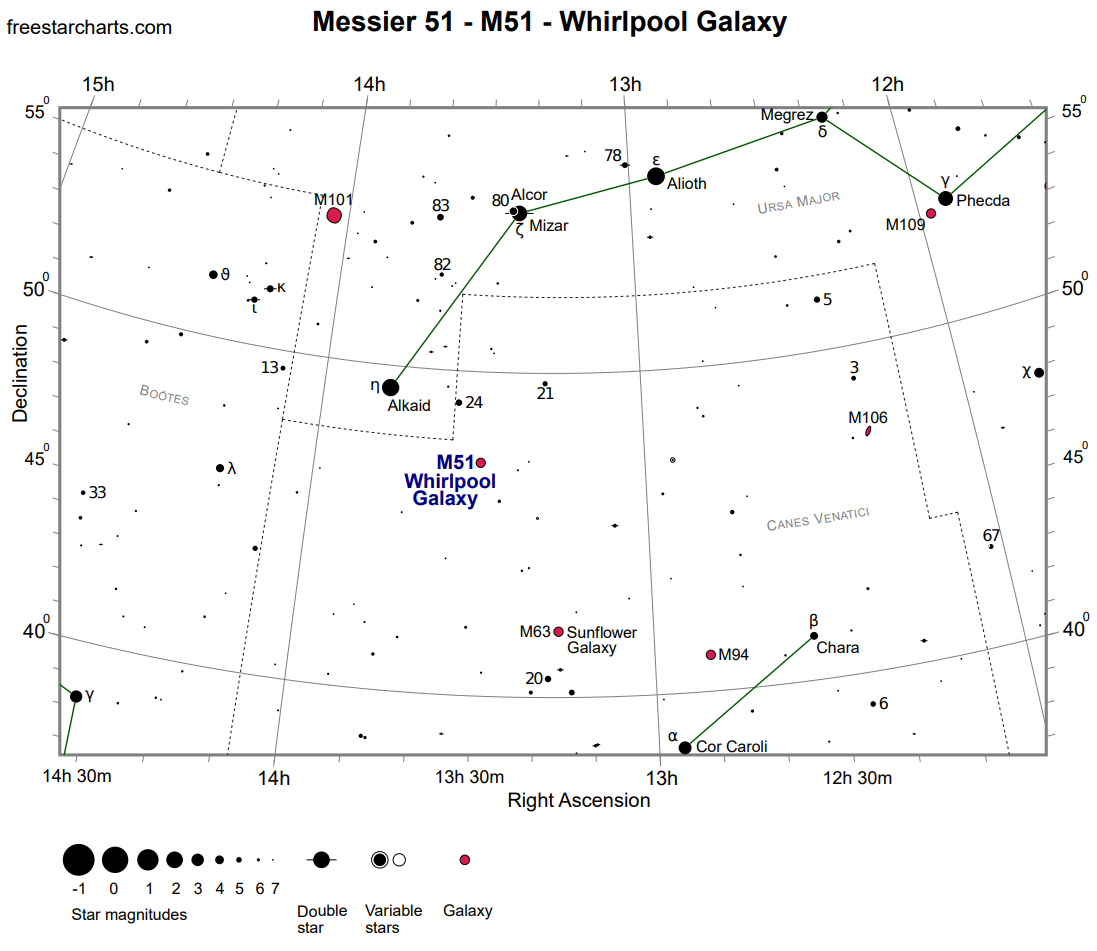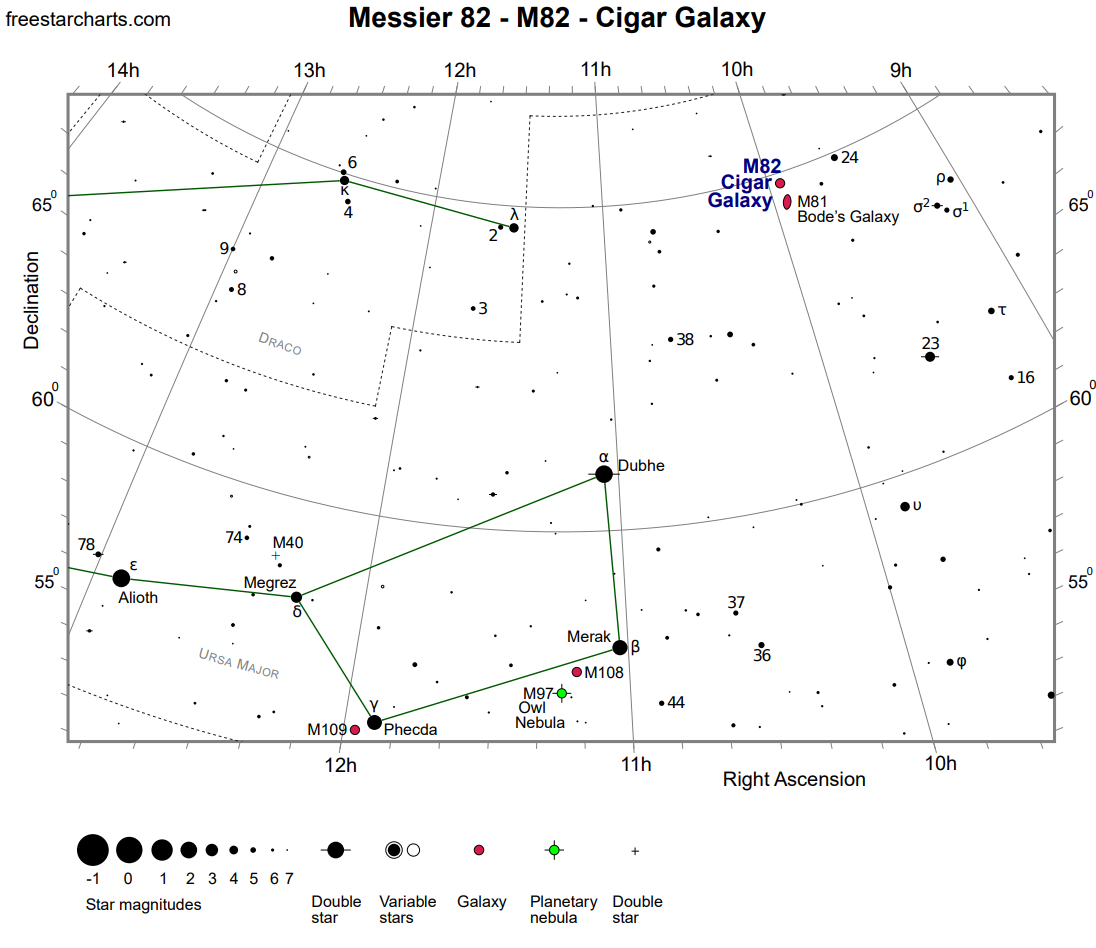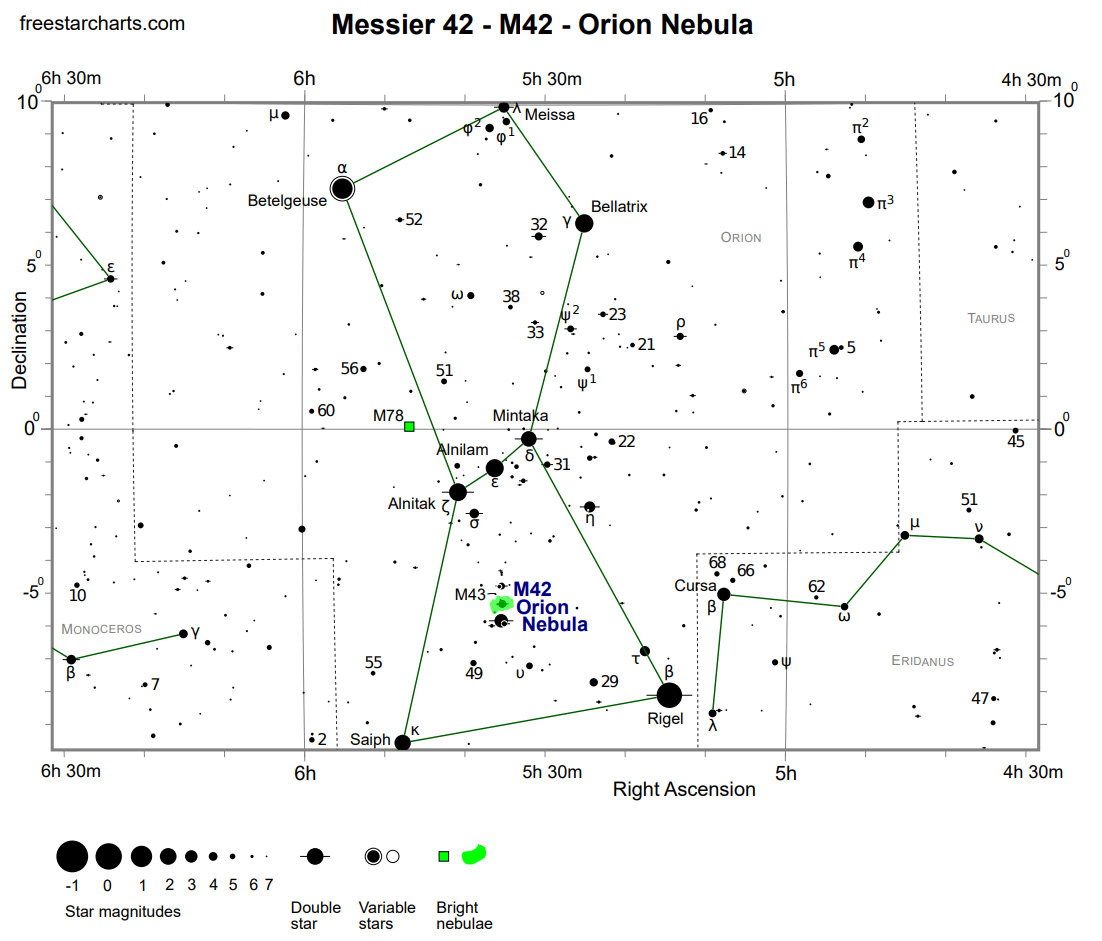Starhopping!
Starhopping is the process of getting to your target from a nearby known location (star).
Apps or Star Charts
You can find an object in the big big sky by looking up your target in either a phone app or via "Star Charts".
Star Charts are designed specifically to guide you to your target based on bright stars around it, generally the object's Constellation.
FreeStarCharts.com has great infomation on objects, pictures and Star Charts so that you can find it.
Regardless of whether you are using an application image or a chart, you need to be able to mentally translate the relative positions on the image to the corresponding location in the sky.
Some are really easy. For example, the great Orion Nebula IS the middle "star" of Orion's sword. Find Orion's Belt (there bright collinear bright stars, below the midline there are three fainter vertical stars (like a hanging sword), it's the middle one). Didn't even a map for that. Easy (of course, you need to know where Orion is...).
Some are more complicated.
Generally, for targets you need binoculars or a telescope to see, you:
- look at the map (image or Star Chart)
- see what part of the sky the target is in (the image or Star Chart likely has a constellation)
- Orient yourself and/or your telescope towards that part of the sky (the closer to target the better)
- in the map, memorize some markers or offsets from nearby stars to the target
- look up to the sky and apply those markers or offsets to estimate the position in space.
- Stare at the sky to memorize that position.eyeball where it's supposed to be
- Swing your binoculars or telescope to that location (use the finder scope)
- You will likely not hit the target exactly (especially when using high power eyepieces)
- Gently and slowly pan the scope around to see if you find it (some computerized scopes have functions that "spiral outward" from the estimated position to help find it.
- You may have to repeat the process a few times to find your target
Here's a video talking through these steps: How to Aim a Scope
Here's the "easy" Orion Nebula Star Chart:
(Note that bigger stars = brighter stars)
The Whirlpool Galaxy (Messier 51)
This is an easy "hop" if you're in a dark sky and have an 8" or larger scope. And when you see if for the first time - when the continuous photon train from this face-on Grand Spiral Galaxy touches your retina - you will be profoundly moved. This is what someone or something 30 million miles away would see if they were looking at us.
 Here's how I tell myself how to hop there:
Here's how I tell myself how to hop there:
"From the last two stars in the handle of the Big Dipper, go to the right 90 degrees from the last star about half the distance of the two handle stars. Sweep slowly around that area." Because the two guiding stars are bright and close by and it's right angle, it defines a pretty tight box to search.
Bode's Galaxy and the Cigar Galaxy (M81 and M82)
This is as a farther hop, but the galaxies (two! right by each other) are brighter and can be seen in a brighter sky. I've been able to find these in a very bright sky with a 4.7" refractor.
 Here's how I tell myself how to find M81 an M82:
Here's how I tell myself how to find M81 an M82:
"Extend the line between non-handle diagonal pan stars of the dipper about 1.2 times the distance between those two stars. Sweep the area." (I tend not to know the name of many stars). Because it's a long hop, I generally have to retry several times to find the galaxies.
Note: in a dark sky these are really nice targets even with a small inexpensive scope.
Sometimes, you have to use some brighter stars to point to a dimmer, less prominent star that is nearer your target. This is known as a multiple hop.
